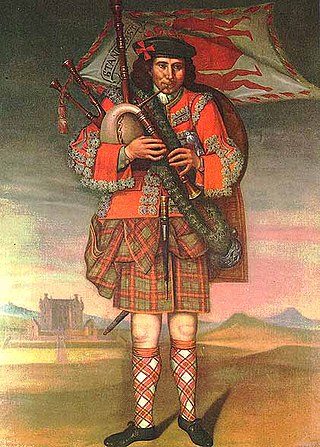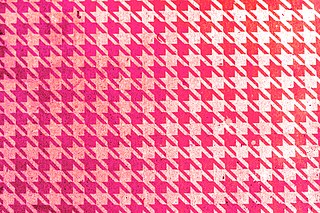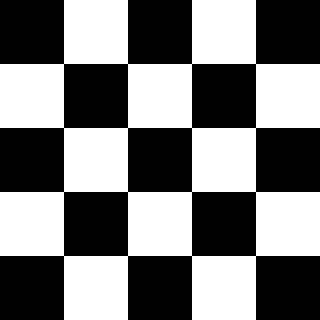
A kilt is a garment resembling a wrap-around knee-length skirt, made of twill-woven worsted wool with heavy pleats at the sides and back and traditionally a tartan pattern. Originating in the Scottish Highland dress for men, it is first recorded in 16th century as the great kilt, a full-length garment whose upper half could be worn as a cloak. The small kilt or modern kilt emerged in the 18th century, and is essentially the bottom half of the great kilt. Since the 19th century, it has become associated with the wider culture of Scotland, and more broadly with Gaelic or Celtic heritage.

Carnegie Mellon University (CMU) is a private research university in Pittsburgh, Pennsylvania. The institution was originally established in 1900 by Andrew Carnegie as the Carnegie Technical School. In 1912, it became the Carnegie Institute of Technology and began granting four-year degrees. In 1967, it became the current-day Carnegie Mellon University through its merger with the Mellon Institute of Industrial Research, founded in 1913 by Andrew Mellon and Richard B. Mellon and formerly a part of the University of Pittsburgh.

Madras is a lightweight cotton fabric with typically patterned texture and tartan design, used primarily for summer clothing such as pants, shorts, lungi, dresses, and jackets. The fabric takes its name from the former name of the city of Chennai in south India.

Tartan is a patterned cloth consisting of criss-crossed, horizontal and vertical bands in multiple colours, forming simple or complex rectangular patterns. Tartans originated in woven wool, but now are made in other materials. Tartan is particularly associated with Scotland, and Scottish kilts almost always have tartan patterns. The earliest surviving samples of tartan-style cloth are around 3,000 years old and were discovered in Xinjiang, China.

The Tartan is the original student newspaper of Carnegie Mellon University. Publishing since 1906, it is one of Carnegie Mellon's largest and oldest student organizations. It currently has over 170 student members, who contribute on a weekly basis. It is funded by advertisements and the university's student activities fee.

Flannel is a soft woven fabric, of varying fineness. Flannel was originally made from carded wool or worsted yarn, but is now often made from either wool, cotton, or synthetic fiber. Flannel is commonly used to make tartan clothing, blankets, bed sheets, and sleepwear.

An argyle pattern is made of diamonds or lozenges. The word is sometimes used to refer to an individual diamond in the design, but more commonly refers to the overall pattern. Most argyle contains layers of overlapping motifs, adding a sense of three-dimensionality, movement, and texture. Typically, there is an overlay of intercrossing diagonal lines on solid diamonds.

The belted plaid is a large blanket-like piece of fabric which is wrapped around the body with the material pleated or, more accurately, loosely gathered and secured at the waist by means of a belt. Typically, a portion of the belted plaid hangs down to about the knees or ankles with the rest of the material being wrapped up around the upper body in a variety of ways and pinned or otherwise secured to keep it in place.

Mackinaw cloth is a heavy and dense water-repellent woolen cloth, similar to Melton cloth but using a tartan pattern, often "buffalo plaid". It was used to make a short coat of the same name, sometimes with a doubled shoulder. These jackets have their origins on the Canadian frontier and were later made famous by Canadian and American loggers in the upper Midwest as workwear during the mid-19th century logging boom.

Houndstooth, hounds tooth check or hound's tooth, also known as dogstooth, dogtooth, dog's tooth,, , is a duotone textile pattern characterized by broken checks or abstract four-pointed shapes, traditionally in black and white or such contrasting dark and light pattern.

Tweed is a rough, woollen fabric, of a soft, open, flexible texture, resembling cheviot or homespun, but more closely woven. It is usually woven with a plain weave, twill or herringbone structure. Colour effects in the yarn may be obtained by mixing dyed wool before it is spun.

The modern, tailored kilt which is ubiquitous at Highland games gatherings around the world has associated with it an evolving style of wear. This style includes the accessories and other accoutrements which are typically worn with it. In this sense, it is very much like other items of the fashion world.

A full plaid, or just a plaid, is a long piece of tartan fabric, most often worn as part of a Highland dress. It usually matches the tartan of the kilt. A modern full plaid is pleated the whole way, with half of its length sewn shut. Its length is about twice the distance from the ground to the wearer's shoulder.

Check is a pattern of modified stripes consisting of crossed horizontal and vertical lines which form squares. The pattern typically contains two colours where a single checker is surrounded on all four sides by a checker of a different colour.

A maud is a woollen blanket or plaid woven in a pattern of small black and white checks known as Border tartan, Shepherd's check, Shepherd's plaid or Galashiels grey. It was in common use as an item of clothing in the southern counties of Scotland and the northern counties of England until the early twentieth century.
The 1930 Carnegie Tech Tartans football team represented the Carnegie Institute of Technology—now known as Carnegie Mellon University—as an independent during the 1930 college football season. Led by 16th-year head coach Walter Steffen, the Tartans compiled a record of 6–3. Carnegie Tech played home games at Pitt Stadium in Pittsburgh.
he 1940 Carnegie Tech Tartans football team represented the Carnegie Institute of Technology—now known as Carnegie Mellon University—as an independent during the 1940 college football season. Led by first-year head coach Edward Baker, the Tartans compiled a record of 3–5.

Khes is a thin cotton blanket cloth in the Indian subcontinent; it is a damask cloth used for blankets and winter wraps. Khes is generally hand-woven with coarse cotton yarns. Khes as a garment is a simple clothing item to wear loosely to cover the upper body by men in Pakistan and northwest India. Khes is an important cloth in the Punjab region, a region which is famous for its production and historically has been known for not only the production of Khes but also many other coarse cotton textiles, especially in the 19th and 20th centuries. Khes is a comfort object used in bedding, and is also usable as a cover.















